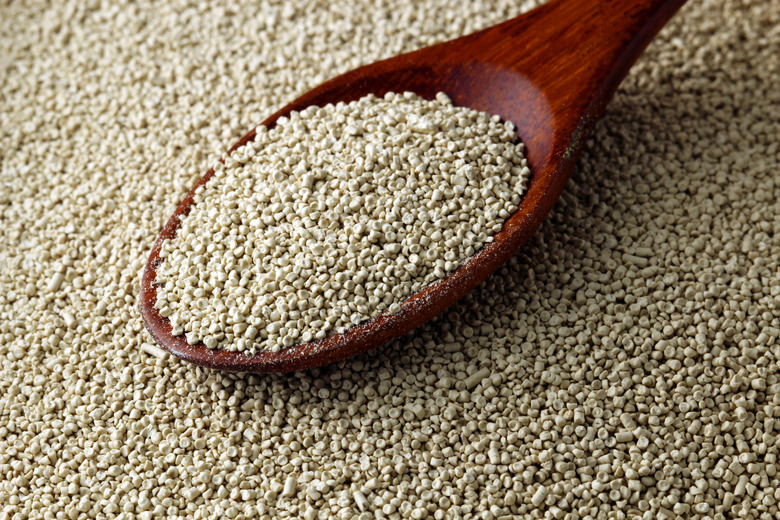How To Measure Yeast Respiration
In the beginning of your biology laboratory career it is inevitable that you will run into the yeast respiration experiment. This simple experiment is a starting point many instructors use to introduce their students into the world of biological reactions. In this experiment the yeast, a living organism, feeds off the sugar in the solution and creates a byproduct. This is known as respiration and the product of the yeast is carbon dioxide, or CO2.
Step 1
Fill the 250mL beaker halfway with water and fill the graduated cylinder completely with water. Put your hand on the top of the graduated cylinder and flip it upside down and place it into the beaker. Try to make sure you don't let any water out because at this point your goal is to make sure the graduated cylinder stays completely full of water. If some air seeps in, don't worry about it, just mark it down and subtract it from your final amount at the end of the experiment.
Step 2
Open the packet of yeast and pour it into the flask followed by the quarter cup of warm water. Once both are in the flask place your thumb over the opening of the flask and gently swirl the contents until the yeast has dissolved in the water. Add one tsp. of sugar and swirl the contents once again.
Step 3
Place the stopper firmly onto the flask and insert the short glass tube into the hole in the top of the stopper. Now attach the rubber hose to the glass tube and place the other end of the tube into the water in the beaker and into the bottom of the graduated cylinder so that any gas that travels through the hose will become stuck in the cylinder.
Step 4
Wait about fifteen minutes for the reaction to run itself out. During this time you will see the amount of gas in the graduated cylinder increase over time and push the water out of the cylinder. This continues until the yeast uses its entire food source or until it poisons itself with its own waste.
Step 5
Measure the amount of carbon dioxide that has been created by the yeast. If there was any air that had been trapped in the graduated cylinder before the experiment started then now would be a good time to subtract that amount from your new measurement. You now have your yeast respiration measurement.
Things Needed
- 250mL Beaker
- 100mL graduated cylinder
- 1 packet regular dry powdered yeast
- ¼ cup warm water
- 1 tsp. sugar
- 500mL flask
- Rubber stopper
- Short glass tube
- Rubber tube
TL;DR (Too Long; Didn't Read)
Make sure you only use warm water and not hot water.
Warning
Once the experiment starts don't touch the flask because the heat from your hands will cause the gas in the flask to expand and will end up varying your end results. As with most lab experiments you are working with glass so be careful when the lab equipment so you don't break anything and cut yourself.
Cite This Article
MLA
Writer, Contributing. "How To Measure Yeast Respiration" sciencing.com, https://www.sciencing.com/measure-yeast-respiration-5379077/. 25 April 2018.
APA
Writer, Contributing. (2018, April 25). How To Measure Yeast Respiration. sciencing.com. Retrieved from https://www.sciencing.com/measure-yeast-respiration-5379077/
Chicago
Writer, Contributing. How To Measure Yeast Respiration last modified March 24, 2022. https://www.sciencing.com/measure-yeast-respiration-5379077/
